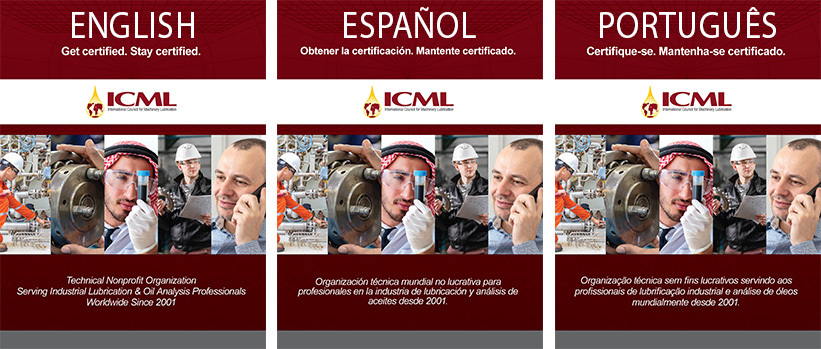Hovannes (Hovig) Arslanian, Dec. 17, 2024 | For the past few years, my work has focused on industrial maintenance consulting, where I guide businesses through strategies like reactive, preventive, and proactive maintenance. The objective is always to strike a balance between criticality, efficiency, and cost-effectiveness, deciding which approach fits best based on the specific requirements of the machinery. Although my professional work revolves around industrial systems, my education in motorsport engineering and passion for vehicles frequently draw questions from friends about their personal car or truck problems. Surprisingly, many of these questions stem from issues that could have been avoided with basic but correct maintenance practices.
In this article, I will dive into those fundamental yet often neglected practices that help prevent costly failures that lead to crises like engine and gearbox replacements, sometimes even in vehicles with as little as 40,000 miles. By understanding the differences between basic cleanliness, contamination control, and good maintenance habits, vehicle owners can extend the reliability of their cars while avoiding major repairs.
WHY mAINTENANCE mATTERS mORE tHAN yOU tHINK
Most car owners follow their mechanic’s advice when it comes to maintenance. However, many breakdowns occur because critical maintenance steps are either neglected or improperly performed. To make this clear, think of it this way: Imagine sitting down for a meal at a restaurant where the table hasn’t been cleaned, the utensils are dirty, and the food preparation tools are improperly maintained. You wouldn’t want to eat there, right? The same logic applies to your car’s engine.
In this scenario, the engine oil represents the food, while the tools used during oil changes (such as funnels, wrenches, and hands) are the utensils. If those tools are dirty, the risk of contamination becomes high, just as dirty utensils can cause illness. Poor maintenance practices are the silent killers of vehicle reliability.
The Hidden Dangers of Contamination
One of the most common yet often overlooked causes of premature engine wear and failure is contamination during maintenance, especially during oil changes. During an oil service, it’s not uncommon to witness mechanics handling the task with dirty hands or using tools that have not been properly cleaned. It’s even more common to see the same uncleaned funnel used to refill the engine oil, antifreeze, or other critical fluids. These improper practices introduce contaminants into the engine that gradually lead to wear and tear.
Even though mechanics generally aim to protect engines, they sometimes unwittingly introduce these contaminants through sloppy maintenance practices.
Now, let’s put this into perspective using scientific examples. The most common oil filters in vehicles today capture particles as small as 40 microns, with about 95% efficiency. To put this in context, a human hair is about 80 microns thick, while red blood cells measure around 5 microns. So, despite the oil filter’s efforts, particles smaller than 10 microns often bypass the filtration system. The problem? These tiny contaminants are the most destructive to an engine’s internal components like bearings and rings.
These small particles are capable of entering tight clearances between moving parts, causing micro-abrasions that accelerate wear. Over time, this wear can cause significant damage to the engine. It’s akin to allowing a constant stream of fine sand (silica, for example) to pass through your engine, grinding away at critical parts.
The Importance of Cleanliness in Maintenance
Cleanliness during maintenance practices should not be underestimated. Most dust particles around us contain silica, a hard and abrasive material, which is one of the most harmful substances for engine components. Even though mechanics generally aim to protect engines, they sometimes unwittingly introduce these contaminants through sloppy maintenance practices.
For example, a dirty tool dropped on the workshop floor picks up dust and dirt, which can then be transferred into the engine when used. Contaminants such as fuel, water, glycol,and debris, when introduced into the engine, act like “grains of sand” that accelerate wear in places where lubrication is crucial.
If you consider engine oil as the bloodline of the engine, then the cleanliness of the tools, hands, and environment during an oil change become critical to maintaining engine health. Contaminated oil can lead to the degradation of the oil’s protective properties, leaving engine parts vulnerable to friction and wear.
Strategies for Improving Vehicle Reliability
Now that we’ve discussed the dangers of poor maintenance practices and contamination, let’s explore the types of maintenance strategies that can significantly improve your vehicle’s reliability.
1. Reactive Maintenance: “Fix It When It Breaks”
In reactive maintenance, you deal with problems as they arise. Unfortunately, this is the approach most car owners and even some mechanics take. While it seems straightforward, waiting for something to break down before fixing it can lead to higher costs and catastrophic failures. For example, if your engine oil is contaminated with dirt and debris, it might not cause noticeable problems initially, but over time, it will result in increased friction, overheating, and eventually complete engine failure.
In the automotive industry, reactive maintenance is often referred to as a “run-to-failure” approach. While this can be acceptable for non-critical, low-cost components, it’s risky and expensive when applied to critical components like engines or gearboxes.
2. Preventive Maintenance: “Scheduled Maintenance”
Preventive maintenance is the most commonly recommended strategy for car owners. This involves regular oil changes, fluid checks, and inspections based on manufacturer recommendations. Following these schedules helps ensure that contaminants like water, fuel, and dirt are kept out of the engine.
While this is a step in the right direction, preventive maintenance alone is not always enough, especially when cleanliness during the service is compromised. Mechanics might still inadvertently introduce contaminants during routine maintenance. Therefore, it’s crucial to ensure the service is performed in a clean environment with properly maintained tools.
3. Proactive Maintenance: “Address the Root Causes”
Proactive maintenance goes a step further by focusing on identification and elimination of the root causes of potential failures before they occur. This is particularly relevant when dealing with contamination.
For instance, analyzing the condition of your oil through used oil analysis can reveal the presence of wear particles, fuel dilution, water, or glycol contamination. This data can help you address issues early—such as replacing a faulty injector causing fuel dilution, or identifying a leaking gasket causing water contamination—before they lead to a breakdown.
Additionally, proactive measures like installing more efficient filters or using better quality oil can significantly reduce the chances of premature wear. For example, bypass filtration systems can remove contaminants as small as 1-3 microns, providing superior protection compared to standard oil filters.
Solutions to Improve Vehicle Reliability
To improve vehicle reliability and avoid costly repairs, consider the following best practices:
1. Choose High-Quality Filters and Lubricants
- Invest in high-quality oil filters that can capture a broader range of particle sizes, especially smaller contaminants. Consider upgrading to bypass filtration systems for even better filtration.
- Use premium-grade oils that resist contamination and provide better protection against wear. Synthetic oils, for instance, often perform better under high temperatures and resist breakdown longer than conventional oils.
2. Ensure Cleanliness During Maintenance
- Always ensure that tools, funnels, and hands are clean before servicing the vehicle. Keep oil containers sealed and avoid placing tools on the ground where they can pick up dirt.
- If you’re doing DIY maintenance, clean your workspace thoroughly and be mindful of contamination risks.
3. Implement Proactive Monitoring
- Regularly perform oil analysis to monitor the condition of the oil and detect early signs of contamination. Look for signs like metal particles, water, or fuel in the oil, which can indicate underlying problems.
- Regular inspections of seals, gaskets, and fluid levels can prevent leaks that introduce contaminants into the oil system.
4. Follow Manufacturer Recommendations, But Be Mindful of Your Environment
- While manufacturer service intervals are useful, environmental factors like dust, humidity, and driving conditions can require more frequent maintenance. Adjust your schedule accordingly to ensure your vehicle operates in optimal condition.
Conclusion
Vehicle reliability can be significantly improved through correct maintenance practices, particularly when it comes to preventing contamination. By adopting proactive maintenance strategies, using high-quality products, and ensuring cleanliness during every service, you can extend the lifespan of your vehicle’s most critical components. Simple changes, such as upgrading filters and paying attention to potential contamination sources, can save you from costly engine repairs and breakdowns in the future.
Taking the time to understand and implement these practices is key to ensuring that your vehicle remains reliable for years to come. Just as you wouldn’t want to get sick by eating with dirty utensils, your car deserves the same level of care to keep it running smoothly.








